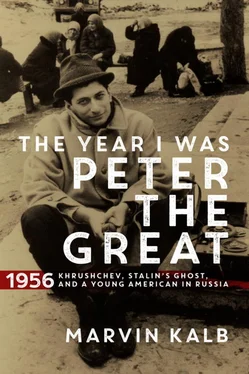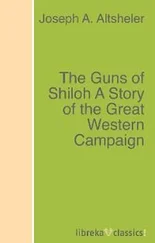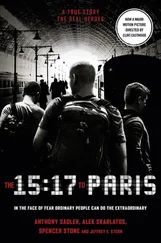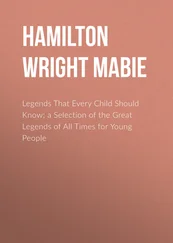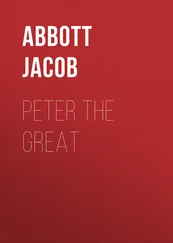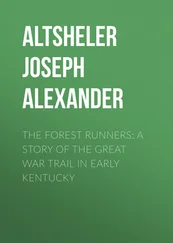“This is the center of the collective farm,” Pyotr announced. There was not a soul in sight, only the full sun against the chalk-white sky. No one was in the cotton field. I heard the barking of a dog, nothing more. Then, disturbing this silent emptiness, a heavyset Uzbek emerged from the building. As he approached he put his right hand on his heart, the traditional sign of hospitality in central Asia. He introduced himself as the farm’s bookkeeper.
“Welcome,” he said, smiling. “We were expecting you.”
In a reciprocal gesture, I put my hand on my heart and thanked him for his hospitality. “I was hoping I could see the workers in the field,” I said.
The bookkeeper nodded. “Let’s go,” and he led our modest procession of me, Pyotr, and the driver into the cotton field.
We walked along a narrow path. On either side was a dry ditch. “We will soon have water,” the bookkeeper said, as though in prayer. “For us, water is gold.” It was the same phrase I had heard earlier on the flight into Tashkent. I noticed that the cotton buds were small and, up close, not as white as I had expected. They came up to my knees, and many drooped under the blistering sun.
Up ahead, like a mirage in a desert, appeared a circle of clay huts, an oasis in the cotton field. Dogs began to bark. The bookkeeper put up his hand, a sign of caution. “These dogs are vicious,” he said, “especially with strangers. Wait here.” He went ahead while we stayed behind. The barking only got louder. A few minutes later the bookkeeper returned. “I had the dogs locked up. It’s safe now.” We entered the circle of huts and found about twenty Uzbek men sitting on rugs in the blessed shade of one tree, which stood like a throne in a castle room of the grateful faithful. Children, bareheaded and barefoot, played in the sun. Women, their heads lowered, waited on the side.
These Uzbeks represented one brigade of many on a collective farm of 20,000. Each brigade had an elected leader, and each leader was responsible to the farm chairman, deputy chairman, and bookkeeper. Presumably the leaders were all members of the Soviet Communist Party. When I sought confirmation, the bookkeeper pretended not to hear or understand my question.
All of the huts looked the same. “May I see one?” I asked. The bookkeeper had been waiting to hear that question. A hut had already been prepared for us. A woman waiting at the door welcomed us, her right hand to her heart. The hut consisted of two small rooms, both Spartan in appearance. One, furnished in Uzbek style, had a single bed pushed against a wall and many rugs scattered on the floor and carefully hung on the walls. The other room had only a hammock. I wondered whether she lived there alone. Unlikely. But if others lived here with her, where did they asleep? Where did they eat? There was no table. The woman herself seemed friendly. She offered green tea and grapes. Before I could accept, the bookkeeper, speaking in Russian, said we were on a very tight schedule. “Maybe next time,” he said with a nod to diplomacy.
I asked the woman, “May I take a picture of you?” She shook her head no, and the bookkeeper, relieved, ushered us away from the peasants and back toward our limo.
We drove about ten minutes in the opposite direction to the Dom Kultury, the House of Culture, which served as school, library, theater, propaganda (agitprop), and general amusement center. I had the impression it must earlier have been two huts, now rolled into one. Miraculously, it was located in a heavily wooded area, possibly the only such area in the Samarkand oblast (region). The bookkeeper pointed to a shady spot behind the house, where we headed. Two Uzbek women, dressed in bright skirts and blouses, rushed to spread rugs on the ground and then quickly produced two trays of beautiful black and yellow grapes, the largest I had ever seen, delicious flat bread, and many pots of green tea. After a few minutes the women added figs and watermelon. A feast for kings, I thought.
As we sat, enjoying the food and the rest, we began to talk, and we quickly found ourselves talking about everything, in particular, much to my surprise, what Pyotr referred to as “the glories of America.”
To these citizens of the Soviet Union, nothing seemed more fascinating than American cars. Not just the Armenian driver—they all loved them, Chevrolets in particular.
How many different car companies existed, and how many cars were actually produced?
How many models were there for each car?
And, most amazing, how many different models of the different cars were produced every year? I did not have exact figures, but they seemed content with my enthusiastic generalizations.
I told them I had once owned a 1952 Chevy convertible.
“Really!” “How much did it cost?” “You didn’t need government permission to buy one?” To them it was all new and breathtaking. We discussed express highways and thoroughfares, which also intrigued them. How many were there in Washington? I had no idea. We talked about jazz music. Pyotr confessed that when he was a student in Moscow, he listened to the Voice of America every night and often danced with fellow students till dawn. We spoke about the Empire State Building, and the other skyscrapers that defined the New York skyline. The Russian word for “skyscrapers” was the verbal concoction skayskreperz , and every Russian knew it.
Most touching to me was our conversation about my family. They were astonished that my father was a tailor, a workingman, and my mother a housewife. How could I be a diplomat, working at the U.S. embassy in Moscow, and my father a workingman? How could that be? I tried to explain that my job, translating the Soviet press, was not really important—it was way down on the totem pole of power and authority—but they didn’t believe me.
They were even more astonished when I told them that my mother and father owned their own home and their own car, and that it was not that extraordinary for a workingman to own his own home. Many did.
“How many?” Pyotr demanded.
“I don’t know,” I said. Pyotr smiled—he thought he had caught me in a fib.
“How many suits does your father own? One or two?” asked the bookkeeper.
“Five, I think.” They looked at one another with knowing skepticism.
“And how many dresses does your mother have?” asked Pyotr, the number one skeptic.
“I’m not sure, maybe five or ten.” Pyotr wanted to believe me, but could not.
The bookkeeper, somewhat flummoxed by my description of my family, which obviously did not fit his image of the oppressed American worker, decided on the spot that we should talk about Russia. Enough about America. And we should talk about Russian casualties and suffering during World War II. That, he hoped, would explain why most Soviet workers did not have their own home or car. “The ordinary people of Russia hate war,” he said soberly. “We want peace.”
It was time, I thought, for me to invoke Khrushchev’s call for “peace and friendship.” I raised my cup of green tea and toasted “peace.”
They all joined me.
The driver shot a hard glance at Pyotr. “Isn’t this better than hating Americans? Why can’t we just get along like this always? Why must we always be told about ‘inevitable war’”? He had not yet been told about Khrushchev’s new formula of “peaceful coexistence.” We all agreed that peace would be better than war, and we should all strive to achieve a world where “peace and friendship” prevailed.
That evening I noted in my diary: “I had a wonderful time today, and driving back I felt I had known these two men all my life. They were good people, who would much sooner get along with me than carry the torch of enmity.”
Читать дальше
